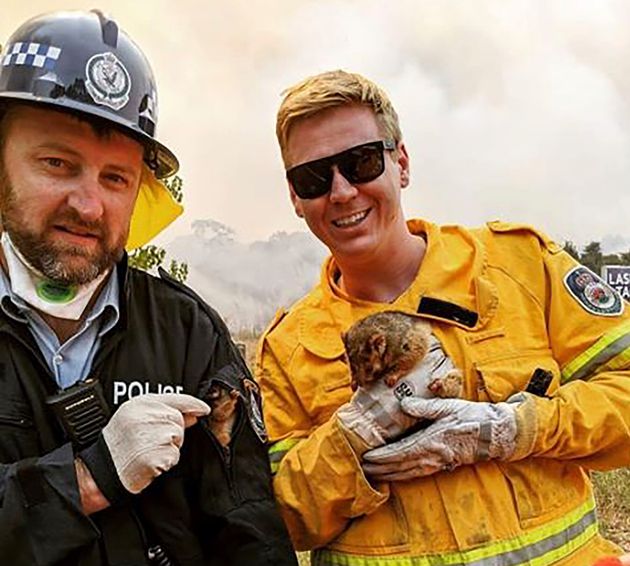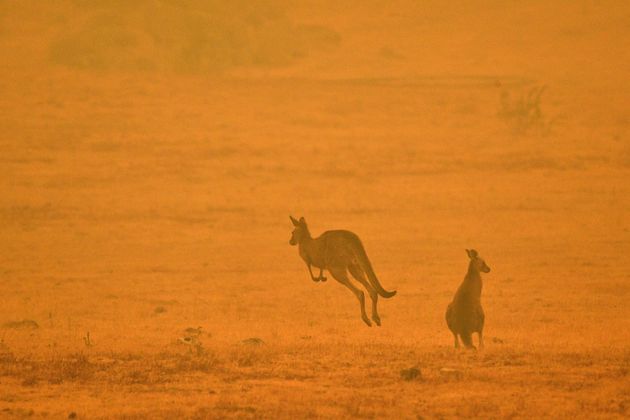The number of wildlife estimated to have died in Australia’s wildfire catastrophe has skyrocketed to more than 1 billion.
Chris Dickman, an ecologist at the University of Sydney, told HuffPost that his original estimate of 480 million animals was not only conservative, it was also exclusive to the state of New South Wales and excluded significant groups of wildlife for which they had no population data.
“The original figure ― the 480 million ― was based on mammals, birds and reptiles for which we do have densities, and that figure now is a little bit out of date. It’s over 800 million given the extent of the fires now ― in New South Wales alone,” he said.
“If 800 million sounds a lot, it’s not all the animals in the firing line,” he added.
That figure excluded animals including bats, frogs and invertebrates. With these numbers included, Dickman said, it was “without any doubt at all” that the losses exceeded 1 billion. “Over a billion would be a very conservative figure,” he said.
An environmental scientist at the World Wildlife Fund Australia, Stuart Blanch, confirmed these estimates, reiterating that, given the expansion of the fires since the last calculations, 1 billion was a modest guess.
“It’s our climate impact and our obsession with coal that is helping wage war on our own country,” Blanch said.
Critically endangered species, including the southern corroboree frog and mountain pygmy-possum, could be wiped out as fires ravage crucial habitat in Victoria’s Alpine National Park and New South Wales’s neighbouring Kosciuszko National Park.
Threatened species, such as the glossy black cockatoo, spotted-tail quoll and long-footed potoroo (both small marsupials), are also facing real risks of extinction in large parts of their range.

Dickman said bats, which have enormous populations along Australia’s east coast and are critically dependent on forest habitat, undoubtedly also sustained enormous losses.
“The numbers would have to be huge. And they’re very susceptible to the fires,” he said.
Over the weekend, Australia Zoo’s Bindi Irwin shared sad news from the zoo’s wildlife hospital.
“In September, flying fox admissions to the hospital skyrocketed by over 750% due to drought conditions and lack of food,” she wrote. “Flying foxes are now being drastically affected by wildfires and we’re again seeing an influx of these beautiful animals from across the country.”
Koalas have lost more than 30% of their key habitat in New South Wales and may have lost a third of their population in that region, federal environment minister Sussan Ley told the Australian Broadcasting Corp. last month. Dickman said it would be a “tough” recovery for the iconic Australian marsupial, dependent on the availability of their food ― eucalyptus tree leaves ― after the blazes sweep through.
The University of Sydney’s animal loss estimates also exclude livestock, which federal agriculture minister Bridget McKenzie expects will exceed 100,000 animals. Harrowing footage of thousands of dead animals beside roads has appeared on social media as the National Defence Force rushed to dig mass graves to avoid a health emergency.
A graphic compiled by agriculture market analysis company Mecardo found that 8.6 million head of sheep and 2.3 million cattle were in the areas of New South Wales and Victoria affected by bushfires.
It could take months before the exact number of livestock losses are known.
Officials will reportedly kill thousands of camels in the country’s northwest as they wreak havoc on communities with their water consumption during the drought and fire emergencies.
The fires across Australia have killed 25 people, destroyed or damaged more than 2,000 homes and burned nearly 31,000 square miles ― an area about the size of Austria.
Australian Prime Minister Scott Morrison announced Monday that the federal government would commit $2 billion over two years to a new national bushfire recovery agency, and more if needed.
Despite sustained criticism, the government has taken a firm stance on climate policy, with Morrison dismissing calls to curb the nation’s substantial coal industry and repeatedly pushing the party line: “We’re meeting and beating our targets.”
The bushfires alone are believed to have spewed as much as two-thirds of the nation’s annual carbon dioxide emissions, the Sydney Morning Herald reported.

Dickman said that the only remaining glimmer of hope amid this disaster was that the government may finally heed the advice of ecologists and environmental scientists, who he said had been frozen out of policymaking for over two decades.
“With any luck, now the government will actually come back and think, OK, we do need the science. We do need the modelling predictions. We do need really good, informed advice about what we should be doing.”
WWF Australia’s environmental scientists have outlined a three-part plan to address the crisis, Blanch told HuffPost.
“One, reduce the threat by ending logging or bulldozing of mature forests… Secondly, a 10 million hectare major reforestation agenda, and, thirdly, in the very short term, more support for wildlife carers and wildlife hospitals around the country.”
You can support organizations saving wildlife by donating to WWF Australia, NSW-based animal rescue group Wildlife Information Rescue and Education Service (WIRES), Zoos Victoria’s bushfire emergency wildlife fund, Australia Zoo’s Wildlife Hospital, or Port Macquarie Koala Hospital.